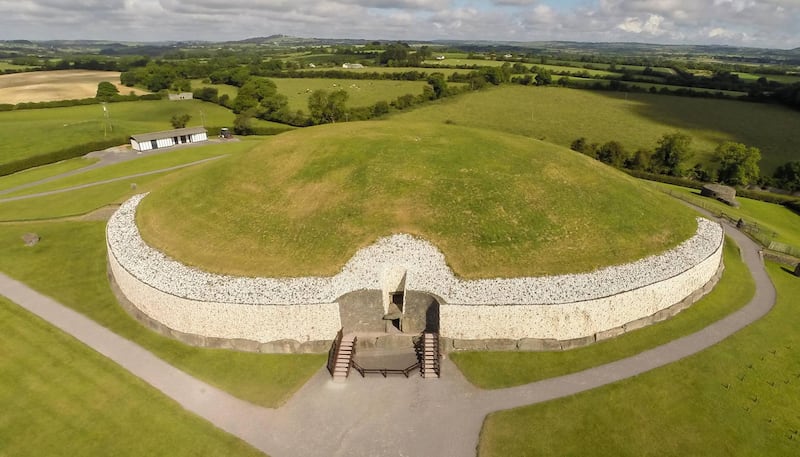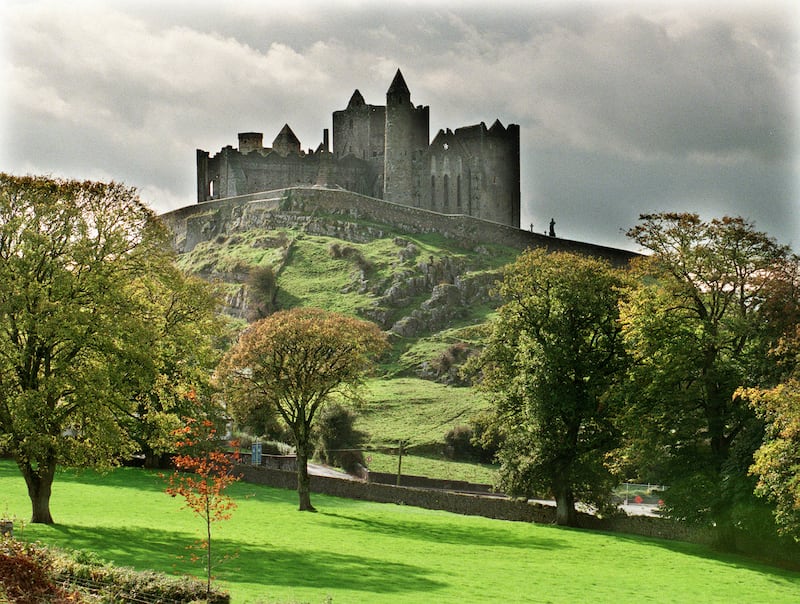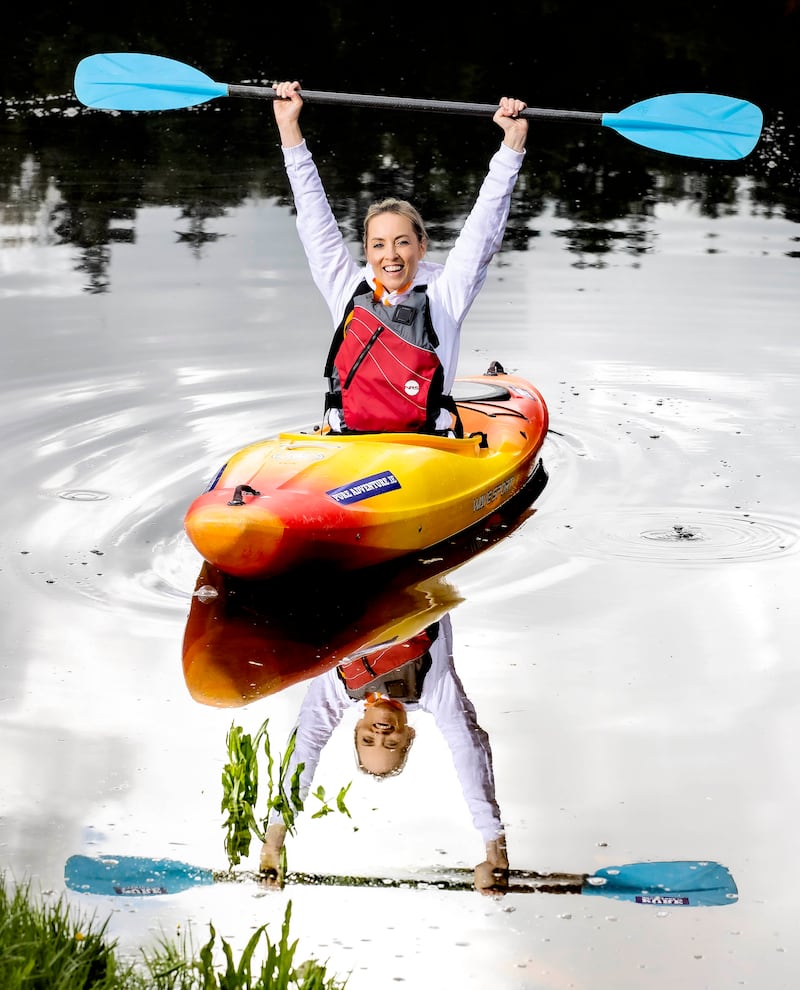Ireland’s Ancient East stretches from Monaghan in the north down to Cork in the south and, true to its name, there is an abundance of historic sights and hidden gems to unearth in the region.
Embodying what the Ancient East is all about is the Boyne Valley, the cradle of prehistoric Ireland, which takes in counties Louth and Meath. There are various ways to explore the area, whether on foot or on wheels, including the Boyne Valley Drive, the Boyne Valley Camino as well as the Grand Canal Greenway.
The jewel of the Boyne Valley is undoubtedly the 5,200-year-old neolithic passage tomb at Newgrange, Co Meath, which dates back further than the Pyramids of Giza in Egypt. Access to the site, which also encompasses the Knowth passage tomb, is via the visitor experience at Brú na Bóinne, which needs to be booked in advance.

Of course, no visit to the Royal County would be complete without visiting the home of the high kings of Ireland, the Hill of Tara, home to the Lia Fáil coronation stone – one of the four legendary treasures of the Tuatha Dé Danann.
READ MORE
Majestic sights also abound in Co Wicklow, but the stunning scenery of the monastic site at Glendalough will really stop you in your tracks. After visiting the famous round tower, head to the upper or lower lake for the perfect vantage point, and breathe in the tranquillity.
To get the blood pumping after all that serenity, try Beyond the Trees, an exhilarating 1.4km walk among the treetops in Avondale Forest Park where you can experience panoramic 360 degree views of the Wicklow Mountains and the Vale of Avoca before coming back down to earth on a gigantic 90m spiral slide.
Equine attractions and nature combine to relaxing effect at the National Stud and Japanese Gardens in Co Kildare. As well as its working stud showcasing some of the world’s finest thoroughbreds, it is home to the magnificent St Fiachra’s Garden, which honours the patron saint of gardeners, and features a range of native plants and wildlife, as well as monastic cells crafted from fissured limestone. Woodland walks and a fairy trail will enchant all ages, while the play zone will keep the kids occupied as the adults enjoy a well-deserved cuppa.

More playtime, and a history lesson, awaits in Laois, where you can put yourself in the shoes of a warrior doing battle with William the Conqueror as you climb up among the ruins of the Rock of Dunamase. Once an early Christian settlement, it was pillaged by the Vikings and went on to become an important Anglo-Norman stronghold.
Another imposing edifice, The Rock of Cashel, in Co Tipperary, is one of Ireland’s most spectacular tourist attractions and the town which it overlooks is also a great spot to stop and refuel, with a selection of lovely bars and cafés. The seat of the kings of Munster, legend has it that St Patrick travelled here to convert King Aenghus to Christianity.

Wexford is known for its many beautiful beaches but it also has an array of historic heritage sites. This year marks the 60th anniversary of former US president John F Kennedy’s visit to New Ross, and the town is rightly proud of its links to the great statesman.
The Kennedy Homestead in Dunganstown, JFK’s ancestral home, which he visited in 1963, shortly before his death, has a museum and interpretive exhibit dedicated to the Kennedy story and legacy. Nearby is the JFK Memorial Park and Arboretum, a lovely tranquil spot for a stroll.
Roll on for a visit to Hook Head, home to one of the oldest operational lighthouses in the world. As well as spectacular views of the sea, it also has a visitor centre and a lovely, welcoming café. On the way, you’ll also pass Loftus Hall – with Halloween on the way, it’s the perfect time to discover the story of how the haunted mansion once played host to the devil himself.
Visitors flock to Kilkenny for its stunning castle and its atmospheric medieval streets but it is well worth venturing out into the surrounding countryside. Just ten minutes outside the city is Dunmore Caves, always a popular one with curious kids.
Graiguenamanagh is home to the historic Duiske Abbey, and from there you can take a riverside stroll along the Barrow to the picturesque village of St Mullin’s in Carlow. The Nore Valley walk takes in the villages of Inistioge, Bennettsbridge and Thomastown, which is also home to Jerpoint Park, location of a lost medieval town.

Vikings once ruled the roost in Waterford, and their presence is still strongly felt in Ireland’s oldest city, where the beautifully-restored Viking Triangle is home to an impressive array of museums, including the most recently launched Museum of the Irish Wake.
Following a recent extension, visitors can now follow the Waterford Greenway directly from the city through the rolling countryside along the coast to Dungarvan. Accessible from the Greenway are the stately home and gardens at Mount Congreve, which recently got a €7m facelift. Kids are encouraged to run wild in the gardens and woodlands, there is a fabulous playground with its own juice bar and a wonderful café overseen by the Cliff hotel and hospitality group.
The Copper Coast, named after the mining industry that was located here in the 19th century, is a designated UNESCO Global Geopark stretching between Tramore and Dungarvan. Dotted with lovely coves and beaches, you might even pick up some fresh fish from one of the trawlers that sails from Boatstrand pier!
From the town of Dungarvan, always worth a stop, it is only a short distance down the road to the historic Cork towns of Youghal and Cobh. The port town of Cobh has become more vibrant in recent years, with an increasing number of charming cafés and shops.
The town’s connection to the Titanic continues to lure visitors, and the word is also spreading on the attractions of Spike Island, Ireland’s own answer to Alcatraz, a short ferry ride from the town. And who could forget that perennial favourite, Fota Wildlife Park, 40 years in business this year and still drawing the crowds with its animal magic.














